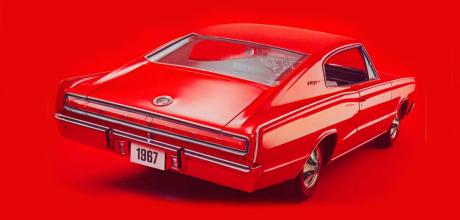The enduring appeal of the Muscle Car
Evans weighs in on the continued popularity of Sixties and early Seventies Detroit factory hot rods…
Across the pond
When we study automotive history, one of the most colourful periods is that which spans from 1960 to about 1974. Loosely defined today as the muscle car era, it witnessed the introduction of the Detroit factory hot rod. The dawn of the Sixties saw America embroiled in no-holds-barred horsepower war, where on the drag strips, ovals and road courses across the continent, a battle was waged between rival manufacturers for racing supremacy.
This naturally filtered its way down to the street, first with full-size bruisers like the Chevrolet 409, Ford 427 and Pontiac Super Duty 421 and then intermediates with monster engines. According to most accounts, the true muscle car era came in 1964 when Pontiac launched the GTO, a performance package that contained the big 389cu in V8 from its full-sized cars as an option on the smaller, intermediate Tempest. With 32,000 sold that first year, GM’s Arrowhead division was clearly on to something and it didn’t take long for rival manufacturers to follow suit.
By 1967, just about every American auto manufacturer and brand (save for the luxury nameplates like Cadillac, Lincoln and Imperial) had its own bona fide muscle car. There were Buick Grand Sports, Chevrolet Chevelle SS396s, Dodge Coronet and Charger R/Ts, Ford Fairlane GTs and corresponding Mercury Cyclones, not to mention the Oldsmobile 4-4-2, the Plymouth GTX and of course the machine that started it all: the Pontiac GTO.
Additionally, the ‘true’ muscle car ranks were bolstered by an ever-increasing number of overachieving pony cars like the Chevrolet Camaro SS and Z/28; the Ford Mustang GT 390/428 CJ, Plymouth ‘Cuda 340/383 and the Pontiac Firebird 326/350 HO and 400. Even fullsize cars got into the craze, with the likes of the Buick Wildcat, Chevrolet Impala SS396/427, Ford Galaxie 500 XL, Mercury Marauder and X/100, Plymouth Fury III and Pontiac Grand Prix. In 1970, the muscle car, or American Supercar era (as it was known then) reached its peak. This was the year of the brightest paint jobs, the biggest engines and the most horsepower and torque. Collectors tend to gravitate to many examples of Detroit high-performance iron offered this year and why not. A good number of them were only offered in limited numbers (either as homologation specials or due to expensive options) and by 1971 the bloom was off the rose, making genuine 1970 model year muscle cars a true high-water mark for the breed.
Yet almost as the era fizzled out, a movement began to take hold. Younger enthusiasts, who weren’t of driving age during the original muscle car era, began to covet these artefacts of Detroit’s golden age and in many cases had the means to buy them (does anybody here remember seeing classifieds for Plymouth Road Runners and Chevrolet Chevelle SS models for buttons in the late Seventies?).
As time went on the survivors went from being cheap used cars to coveted collectables, reflecting in rising values during the Eighties and the birth of what we see today as the muscle car collector market.
What’s interesting is that while trends in classic car circles come and go, muscle cars seem to have an enduring appeal that defines boundaries and generations. Many of the enthusiasts buying, restoring and enjoying these cars today were barely a twinkle in their parents’ eyes during the muscle car era. As time passes and many original muscle car owners let go of their prized possessions, the hobby will live on as younger enthusiasts take the reins – keeping the flame alive and allowing us to continue owning and enjoying these cars.
Original 1968 Dodge Charger promo image (1967). Photo courtesy of Stellantis.


